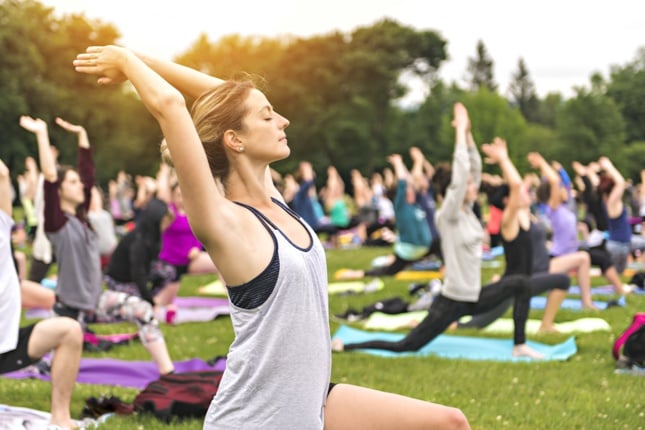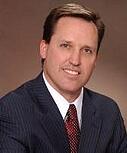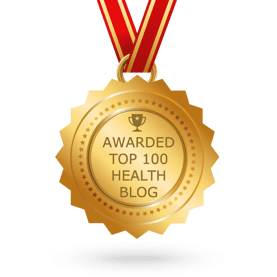
Human beings tend to overcomplicate a lot of things.
Many of us are guilty of thinking that anything worth achieving requires a lot of time and effort. For example, if we want to lose weight, we must go on a complicated diet program designed by some famous doctor or health guru on the best sellers list. Or, if we want to gain muscle, we have to work out every day for hours. On the other hand, we think if it's easy it’s probably too good to be true or it won’t help, yet many of us want "easy" in this complicated, busy world. The bottom line is, whether easy or hard, the basics of a healthy life need to be adhered to. What are the basics?
-
Healthy eating habits: Eat fruits, vegetables, proteins, minimize sugars
-
Rest/Sleep: Get 8 hours of sleep per night, take naps and vacations
-
Low stress levels: Minimize stress by setting boundaries at work, meditate and be grateful
-
Hydration: Drink enough water (64 oz./day minimum) to sustain life in your body's tissue
-
Personal: Do things that make you feel fulfilled, incorporate things that are your passion and inspire you
-
Work: Do something that provides for the necessities in life, but also makes you feel like you are helping others or contributing to a greater good
But, there is one more important thing you must do for health and that is-
MOVE!
Moving can be exercise, working, walking, cleaning, yoga, etc. Anything that gets the body moving is healthy and moving is vitally important to health! Why?
Every single day we create adhesions in our body, everywhere! As a chiropractor, I see what happens when adhesions build up. These adhesions are very thin, and they break up with simple daily movement. This process repeats each night. The best movements to break these adhesions require all areas of the body to move. That is why various movements such as cleaning the house, yoga, Pilates, gardening, walking the dog, going to the gym, and dance are needed to help accomplish this.
Age, pain, repetitive motion and even retirement (many people are less active after retirement) can reduce motion which make these adhesions become thicker. When adhesions become thicker they can cause less motion in your body, pain, stiffness, inflammation, reduction of muscle size, weakness in the muscles and even sickness.
Yes, you can become sick because of a lack of movement in the body.
Lack of Movement Contributes to Illness
Blood vessels do not go to every single cell in the body. Blood releases nutrients into what are called interstitial spaces which contain interstitial fluid. This same fluid then brings the nutrients to the cells and picks up toxins produced by cell function. But interstitial fluid does not have a "heart" to pump the fluid to and from the cells. So how does it get there? Movement acts as the heart of the interstitial fluid!
When you contract your muscles, they squeeze and push the fluid around, acting like the heart! If you don't move, then you are not getting good nutrients to the cells as fast and you are not removing the toxins. With movement, your cells have the chance to be happy and healthy. Even if you don't move too much, luckily the body has other ways of getting rid of toxins such as lymphatic drainage and sweating.
However, in order to sweat you must move enough to raise the temperature of your body which regulates heat and expels toxins. This is another reason for movement! Movement also pushes lymph fluid around to help it drain.
Movement stimulates our biochemical and mental emotional side as well. It has been shown in study after study that movement/exercise stimulates hormones like testosterone, neurotransmitters for our nerve signals, and endorphins which make us feel good and increase energy production and tissue repair. When we have all these wonderful things happening in our body, we feel better, and when we feel better, we look at life with joy and excitement. This makes depression and anxiety less severe and the “feel good” hormones help strengthen the immune system to prevent colds or flu and help improve medical conditions like diabetes or fibromyalgia.
Start Slow- But MOVE!
Of course, there are situations where a lot of movement may exacerbate the pain or dysfunction within your body. Start off with 5 minutes of movement, any type of movement. The best type is something that inspires you to move, something you enjoy. If you like music try dancing, if spiritual movement is what you like try walking meditation or Tai Chi, or if you like a gym setting lift very light weights. As you feel better over time you should increase the time, difficulty and variety of exercise. One rule to remember is that exercise should not be painful, only uncomfortable. If you are making a face where you are gritting your teeth, red faced and muscle spasming like your head is going to explode- you likely are pushing it way too far.
You can obviously have some increased pain or soreness, but this is because your body has likely not moved well in a long time. No one would ever want to be in pain, but there are times when you make a change that your body is not used to and says to you "what the heck are you doing to me!” After a bit of time your resilient body realizes this isn't so bad, the reactions decrease, and your body figures out how to deal with it in a positive way to create incredible healthy results. Stick with it, and keep moving!
Movement and Chronic Issues such as Lyme Disease
I know there will be someone reading this article who says they have way more complicated issues that prevent them from moving. There are medical conditions that will create severe difficulty in movement that could send that individual into a tailspin for weeks. You should always consult your doctor when dealing with these issues but having an integrated team of wellness professionals may be a better answer to some of your movement challenges. Different perspectives from different areas of healthcare may illuminate treatments that are natural, healthy and effective; hopefully without surgical intervention or drugs.
As an example of these methods, for someone with Lyme disease suffering from achy, painful joints and muscles, the treatment for Lyme is purely focused on medication. The patient may think their pain is solely because of the Lyme disease, but it could also be that the person has a poorly balanced musculoskeletal system due to adaptation and lack of movement due to the disease. The muscles have likely atrophied, posture has collapsed, and joints have become restricted as a result of the initial symptoms of the disease. Physical care by a chiropractor, physical therapist and massage therapist could create dramatic musculoskeletal changes in this situation. This physical care could decrease the pain and increase the range of movement that would allow that person to start low level exercise and improve their lives and long-term health.
Get Your Brain and Body in Agreement
One more thing to consider that may prevent you from moving more is yourself.
The brain is the most powerful force within your body. It can make you do whatever you want, but it must resonate with you and be in agreement with your goal if are going to follow through with it. If your brain says we can't do it, then you likely won't. This is because the subconscious part of your brain is agreeing with your conscious thought. If your brain is not motivated it won't make anything happen because deep down, you don't want to. If your subconscious is thinking "I am tired of this situation and I want to do something to change this," then when that conscious thought comes in that says “I can do this,” it sounds like a good choice, and the subconscious will follow through and make it happen. It becomes an easier choice and you don't feel like you have to work at it as hard because it feels natural.
Please, remind yourself to MOVE. Always know that your body can perform and heal. Both your mind and body have amazing potential to create positive change. Be open and willing to go for it!
 Coy Roskosky, D.C.,, "Dr. Coy," is a highly skilled chiropractor in the Washington D.C. area specializing in chronic pain, sports injuries and performance, carpal tunnel syndrome and TMJ. He uses many techniques including Applied Kinesiology (AK), Sacro Occipital Technique (SOT), Active Release Technique (ART), and Activator in his chiropractic practice at National Integrated Health Associates, NIHA.
Coy Roskosky, D.C.,, "Dr. Coy," is a highly skilled chiropractor in the Washington D.C. area specializing in chronic pain, sports injuries and performance, carpal tunnel syndrome and TMJ. He uses many techniques including Applied Kinesiology (AK), Sacro Occipital Technique (SOT), Active Release Technique (ART), and Activator in his chiropractic practice at National Integrated Health Associates, NIHA.
.png?width=305&height=132&name=NIHAlogoBLUE_3_transparent%20(2).png)

